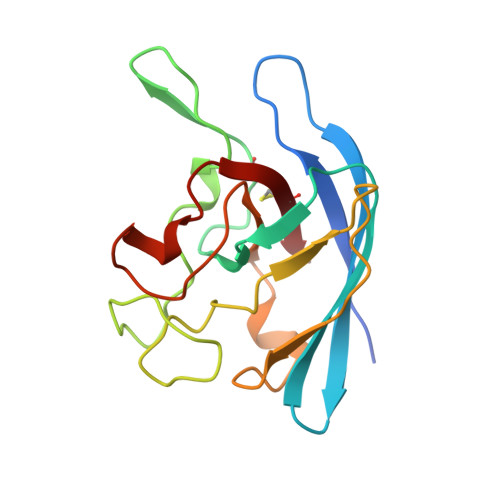Cu,Zn superoxide dismutase structure from a microbial pathogen establishes a class with a conserved dimer interface.
Forest, K.T., Langford, P.R., Kroll, J.S., Getzoff, E.D.(2000) J Mol Biol 296: 145-153
- PubMed: 10656823
- DOI: https://doi.org/10.1006/jmbi.1999.3448
- Primary Citation of Related Structures:
2APS - PubMed Abstract:
Macrophages and neutrophils protect animals from microbial infection in part by issuing a burst of toxic superoxide radicals when challenged. To counteract this onslaught, many Gram-negative bacterial pathogens possess periplasmic Cu,Zn superoxide dismutases (SODs), which act on superoxide to yield molecular oxygen and hydrogen peroxide. We have solved the X-ray crystal structure of the Cu,Zn SOD from Actinobacillus pleuropneumoniae, a major porcine pathogen, by molecular replacement at 1.9 A resolution. The structure reveals that the dimeric bacterial enzymes form a structurally homologous class defined by a water-mediated dimer interface, and share with all Cu,Zn SODs the Greek-key beta-barrel subunit fold with copper and zinc ions located at the base of a deep loop-enclosed active-site channel. Our structure-based sequence alignment of the bacterial enzymes explains the monomeric nature of at least two of these, and suggests that there may be at least one additional structural class for the bacterial SODs. Two metal-mediated crystal contacts yielded our C222(1) crystals, and the geometry of these sites could be engineered into proteins recalcitrant to crystallization in their native form. This work highlights structural differences between eukaryotic and prokaryotic Cu,Zn SODs, as well as similarities and differences among prokaryotic SODs, and lays the groundwork for development of antimicrobial drugs that specifically target periplasmic Cu,Zn SODs of bacterial pathogens.
Organizational Affiliation:
Department of Molecular Biology and The Skaggs Institute for Chemical Biology, The Scripps Research Institute, Mail Drop MB-4, 10550 North Torrey Pines Road, La Jolla, CA 92037, USA. forest@bact.wisc.edu
















